Your message has been sent.
We’ll process your request and contact you back as soon as possible.
The form has been successfully submitted.
Please find further information in your mailbox.


LIMS is at the heart of modern laboratory operations. We’ll make sure it’s worth its weight by connecting it with ERP systems, automation platforms, analytical tools, and more for a unified laboratory environment.
LIMS is at the heart of modern laboratory operations. We’ll make sure it’s worth its weight by connecting it with ERP systems, automation platforms, analytical tools, and more for a unified laboratory environment.
Designed for pharma and QA/QC labs, a specialized LIMS connects disparate instruments, labs and workflows, and integrates them with enterprise systems. LIMS for pharma is also crucial for domain-specific regulatory compliance and better data management.
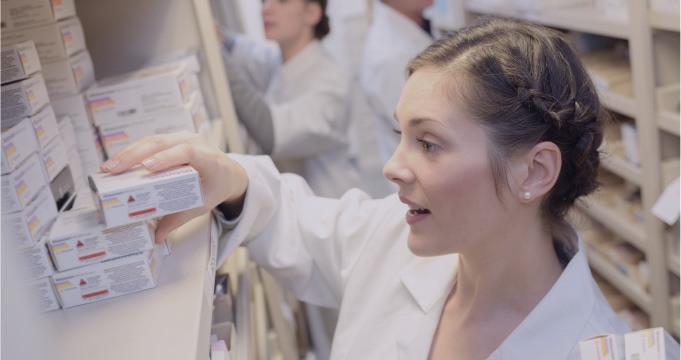
Biotechnology relies on the effective management of complex data and workflows. By integrating your LIMS, we’ll help you move from basic data management to a system that can handle multi-omics data, high-throughput screening results, and experimental protocols.

Biobanks are essentially repositories for biological samples, and they come with specific management challenges. To address these hurdles, our biobanking LIMS integration services help you set up a reliable and scalable framework for tracking, storing, and distributing biological materials.
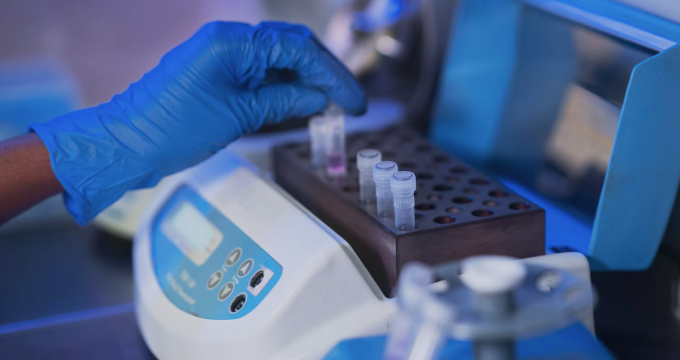
Modern diagnostic laboratories are increasingly having to keep up with the changing demands of precision medicine. Thanks to our clinical diagnostics LIMS integration services, we can transform your lab operations by implementing a system that handles complex testing workflows.
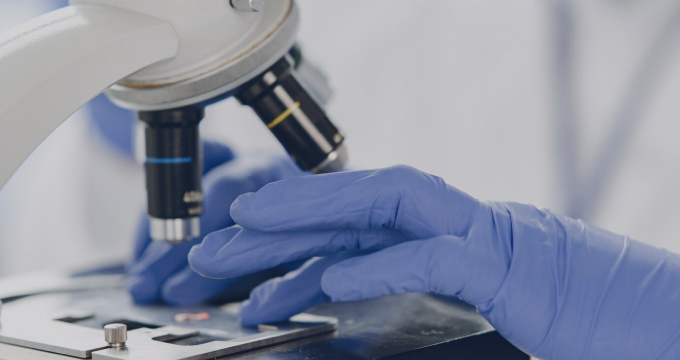
Clinical research requires an adaptive ecosystem that makes collaboration its number one priority. Give your teams the tools they need to manage specimens, analyze data, and stay compliant with our LIMS integration services for clinical research.
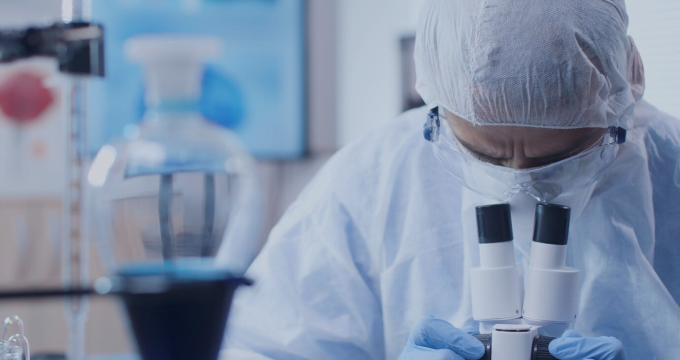
Healthcare demands accuracy, security, and efficiency in managing patient data. Our LIMS integration services for healthcare help labs work more efficiently, get accurate test results, and maintain high standards for regulatory compliance.
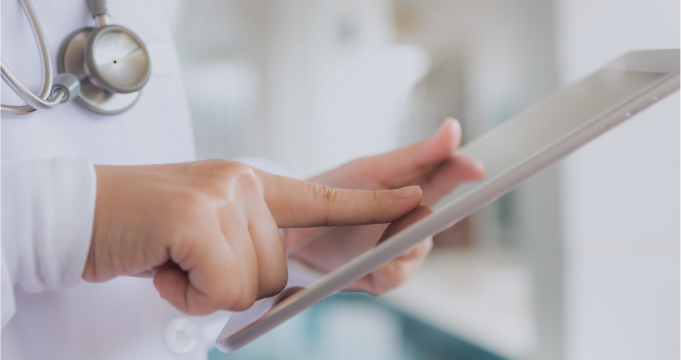
Public health laboratories play a hugely important role in protecting community health. Our LIMS services let you integrate your lab workflows, data, and reporting – meaning you’re better prepared to respond to disease outbreaks and protect public health.

Medical device manufacturing requires strict quality control and regulatory compliance. By integrating LIMS, you can keep a strong quality framework in place throughout the production process — from the raw materials to the final product.
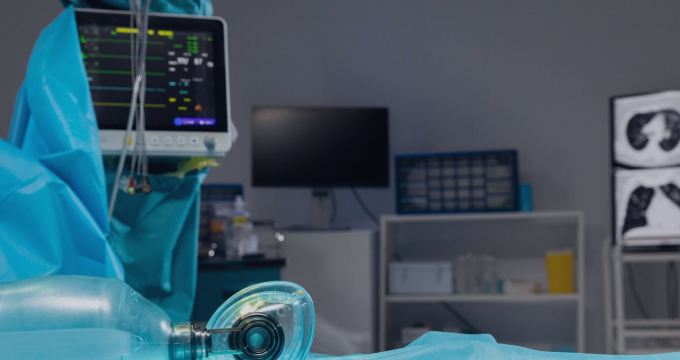
Forensic laboratories need a platform to create an unbreakable chain of custody. Our forensic LIMS integration services help you track, analyze, and report forensic data, so you can be sure your evidence is reliable and admissible in court.

Our LIMS integration services for chemistry make it possible for chemical labs to get the most out of their operations, stay on the right side of the regulations, and do more in less time. This allows tracking samples and managing data throughout the life of a process.
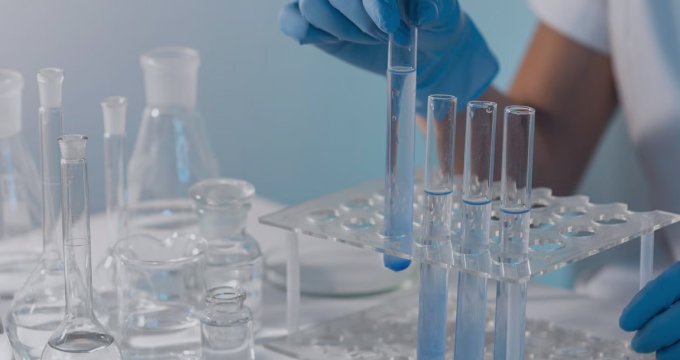
It's important for food and beverage companies to guarantee traceability and quality of their products. We provide LIMS integration services that help manufacturers manage the research, batch management, and QC testing, including issuance of CoA — needed to keep food safe across the global supply chain.

We help companies move from paper-based systems to digital platforms that make it easier to test shelf life, manage batch samples, and maintain the highest standards of food safety throughout the entire lifecycle of their products.

In manufacturing, laboratories make sure products are of the highest quality and comply with all the rules. LIMS for manufacturing makes lab work more efficient by keeping track of samples, managing data, and automating workflows.
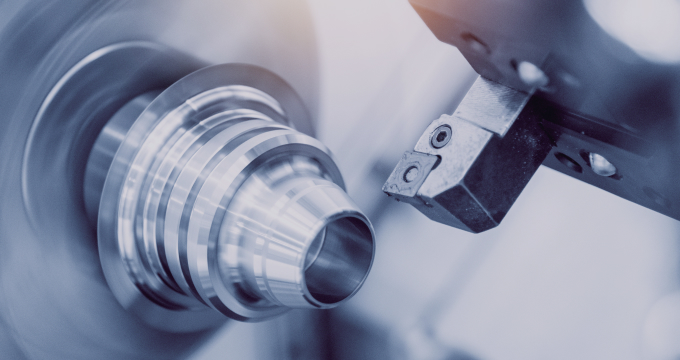
Agricultural LIMS tracks samples from collection through analysis, reporting and management of data related to tests performed on agricultural products. These tests include pesticide residue analysis, nutrient content assessment, and pathogen detection.

The oil and gas industry faces unique challenges when it comes to lab operations — like regulatory requirements and efficient resource management. Oil and gas LIMS integration tackles these issues by going digital and ensuring compliance.

Environmental monitoring laboratories analyze samples from all sorts of sources — including air, water, soil, and biological materials. An environmental monitoring LIMS automates laboratory processes for accurate record-keeping and compliance documentation.

LIMS makes sure your data is safe and sound by keeping it secure and organized. It prevents any mix-ups — like misplacement, mislabeling, or corruption — all while guaranteeing data transparency and accountability thanks to digital audit trails.
Thanks to HIPAA compliance, secure data transfer, in transit and at rest data encryption, role-based access control, audits, and more, LIMS makes sure your data is secure and private. It keeps sensitive lab data safe and helps you stay compliant.
Automating laboratory workflows with LIMS helps labs boost productivity, stay on top of industry standards, and improve research and diagnostic outcomes by making sampling, testing, and data analysis more accurate.
LIMS makes it easier to manage samples and lab supplies. You can track them in real-time, get automated alerts, and integrate them into a supply system. It also helps cut down on waste and improve accuracy — resulting in big cost savings and productivity gains.
LIMS gives everyone access to the same data and workflows via a centralized platform — making it easier for different departments to work together. Plus, the integrated tools and dashboards remove the hassle from communication.
LIMS helps make labs more efficient by handling data systematically and centralizing information. It also makes it easier to comply with regulations, analyze data in more advanced ways, keep research efforts on track, and make better-informed decisions.
LIMS and Electronic Lab Notebooks (ELN) are two critical components in modern laboratory setups. Bringing together ELN systems helps create a unified environment where sample management and experimental documentation work together seamlessly.
Bringing scientific data management systems (SDMS) into the mix gives you a solid platform for managing samples and data in a way that's both productive and adaptable, thanks to automation and better access to information.
By combining chromatography data systems with sample management and analytical instrumentation ones, we can create a smooth data flow between them. This gives you the chance to trace results to specific samples or batches while giving you greater reporting capabilities.
The integration of LIMS and ERP systems creates communication channels between laboratory operations and broader business functions. With real-time access to all data they need, executives can make informed decisions based on accurate information.
The integration of manufacturing execution systems (MES) with LIMS creates a way to collect and analyze comprehensive data on manufacturing processes and laboratory operations for greater operational efficiency and improved product quality.
The integrated system — which includes Quality Management Systems (QMS) and LIMS improves transparency — guarantees the well-timed capture, analysis, and reporting of QC data. It also helps with scientific research and discovery while maintaining compliance.
When LIMS is integrated with EHR systems, laboratory test results are automatically transferred into a patient's EHR or EMR. This helps healthcare providers make better decisions by giving them quick access to lab data right in their EHR.
Linking up LIMS with patient engagement platforms gives patients direct access to their test results — making workflows more straightforward for healthcare providers and supporting a more holistic approach to patient care.
Connecting LIMS with customer relationship management (CRM) systems laboratories can streamline communication with both clients and customers alike. It also helps improve sales and marketing efforts.
Our LIMS integration specialists connect LIMS with BI tools to give lab management a boost with advanced analytics. This gives you a better understanding of how well your operations are running, how long it takes to process samples, and how your team is performing.
When integrated with LIMS, project management software makes it easier to oversee laboratory projects — helping you plan, execute, and monitor timelines while ensuring that data is captured and used as accurately as possible.
The integration of LIMS with revenue cycle management (RMS) software is really important for healthcare organizations, particularly those involved in lab testing services. This makes it easy for data to flow between different operations and financial processes.
Integrating LIMS with POS software and payment gateways makes it easier to carry out business in labs that offer services along with retail transactions. LIMS handles sample data, POS takes care of billing, and payment gateways make sure everything is 100% secure.
Having all your data in one place makes it easier to share between imaging departments and laboratories. Linking your LIMS with RIS/PACS/DICOM systems makes it simpler to manage your laboratory operations and reduces the time spent on data entry.
Custom LIMS integrations give laboratories the power to go beyond standard integrations and tackle specialized requirements head-on. This approach offers more flexibility and control over data management, analysis, and reporting — helping you optimize lab processes.
LIMS and Electronic Lab Notebooks (ELN) are two critical components in modern laboratory setups. Bringing together ELN systems helps create a unified environment where sample management and experimental documentation work together seamlessly.
Bringing scientific data management systems (SDMS) into the mix gives you a solid platform for managing samples and data in a way that's both productive and adaptable, thanks to automation and better access to information.
By combining chromatography data systems with sample management and analytical instrumentation ones, we can create a smooth data flow between them. This gives you the chance to trace results to specific samples or batches while giving you greater reporting capabilities.
The integration of LIMS and ERP systems creates communication channels between laboratory operations and broader business functions. With real-time access to all data they need, executives can make informed decisions based on accurate information.
The integration of manufacturing execution systems (MES) with LIMS creates a way to collect and analyze comprehensive data on manufacturing processes and laboratory operations for greater operational efficiency and improved product quality.
The integrated system — which includes Quality Management Systems (QMS) and LIMS improves transparency — guarantees the well-timed capture, analysis, and reporting of QC data. It also helps with scientific research and discovery while maintaining compliance.
When LIMS is integrated with EHR systems, laboratory test results are automatically transferred into a patient's EHR or EMR. This helps healthcare providers make better decisions by giving them quick access to lab data right in their EHR.
Linking up LIMS with patient engagement platforms gives patients direct access to their test results — making workflows more straightforward for healthcare providers and supporting a more holistic approach to patient care.
Connecting LIMS with customer relationship management (CRM) systems laboratories can streamline communication with both clients and customers alike. It also helps improve sales and marketing efforts.
Our LIMS integration specialists connect LIMS with BI tools to give lab management a boost with advanced analytics. This gives you a better understanding of how well your operations are running, how long it takes to process samples, and how your team is performing.
When integrated with LIMS, project management software makes it easier to oversee laboratory projects — helping you plan, execute, and monitor timelines while ensuring that data is captured and used as accurately as possible.
The integration of LIMS with revenue cycle management (RMS) software is really important for healthcare organizations, particularly those involved in lab testing services. This makes it easy for data to flow between different operations and financial processes.
Integrating LIMS with POS software and payment gateways makes it easier to carry out business in labs that offer services along with retail transactions. LIMS handles sample data, POS takes care of billing, and payment gateways make sure everything is 100% secure.
Having all your data in one place makes it easier to share between imaging departments and laboratories. Linking your LIMS with RIS/PACS/DICOM systems makes it simpler to manage your laboratory operations and reduces the time spent on data entry.
Custom LIMS integrations give laboratories the power to go beyond standard integrations and tackle specialized requirements head-on. This approach offers more flexibility and control over data management, analysis, and reporting — helping you optimize lab processes.
Integrating your LIMS with your existing laboratory ecosystem doesn’t have to be a big deal. We’ve got you covered with end-to-end solutions that make sure your data flows seamlessly, stays secure, and keeps your workflows efficient—all tailored to your lab’s needs.
Our LIMS data migration expertise makes sure that the process is tailored to your demands, all while keeping the data’s integrity and aligning with your unique laboratory needs and regulatory requirements. We also minimize risks and costs throughout the transition.
When integrating LIMS, it’s important to take the time to fully understand the lab processes involved. Our LIMS consultants are your go-to advisors — helping you make the best choices for your system, evaluate vendors, and plan your implementation.
Our team is there for you every step of the way, from planning and configuration to training and launch. We make sure that your transition is smooth and that everyone gets on board quickly, working closely with your team throughout the project.
Your LIMS should fit your lab’s unique workflows — not the other way around. We can also help you customize your LIMS to fit your specific needs: this could include developing custom modules, workflows, reports, and interfaces.
Keep your lab ahead of the competition: whether you need to upgrade your legacy LIMS or migrate to a new platform, we can help. Our modernization services are designed to improve system performance, scalability, security, and compliance.
Our testing and quality assurance services make sure your system works perfectly by testing it thoroughly, checking its performance, and running user acceptance tests (UAT) alongside security assignments.
We offer support packages that you can adjust to suit your lab’s needs. Our support team is always there for you when you need them, helping with troubleshooting, system maintenance, performance optimization — and user training.
I’ve worked with labs that have invested in the latest instruments and equipment, but still struggle with data management. That’s where LIMS integration comes in — it’s the missing piece that helps bring it all together.



We use advanced data mapping techniques — such as ERM and ORM — to make sure all data is compatible. Standardized data formats, such as AnIML and ASTM, also make data exchange easier and minimize the risk of errors.
Using normalization and outlier detection, we develop reliable algorithms for data accuracy and consistency. Advanced quality control techniques guarantee regulatory compliance and help handle deviations.
Some of the multi-layered security protocols we implement include encryption, access controls, and audit trails. We perform regular assessments and penetration testing to identify vulnerabilities and ensure compliance with ISO 27001 and NIST 800-53.
Our LIMS integration experts use APIs, web services, and message queues to make data exchange a breeze. Integration platforms let you sync up in real time — meaning you don’t have to enter data manually between LIMS and other systems.
We analyze workflows to find ways to make them more efficient. We use tools like BPMN and workflow engines to automate processes and make lab operations more productive.
Our integrations adhere to HIPAA, GxP, CLIA, and ISO 13485. We follow FDA guidelines, conduct audits, and perform risk assessments to maintain compliance throughout the integration process.
It’s important to connect your LIMS with other systems to make lab operations that much smoother. We employ a range of secure and reliable integration methods that fit your specific needs.
We design REST- and SOAP-based APIs, along with healthcare-specific messaging standards like HL7, to make sure your LIMS and other systems can exchange data securely in real time. This guarantees your data is always accurate and up to date.
Our team leverages middleware solutions to bridge gaps between your LIMS and other integrated platforms, making it possible to exchange data, automate workflows and improve interoperability.
We utilize ETL tools to extract, transform, and load data from different sources into your LIMS. This helps us make sure the data is accurate, complete, and consistent, especially when working with large data sets.
File transfer is a simple yet effective method for LIMS integration, particularly for instruments and devices. We use secure file transfer protocols such as SFTP, setting up servers as needed, to guarantee data security and reliability.
Our team develops custom scripts using languages like Python, Java, and C# to integrate your LIMS with specialized systems, instruments, or devices that need a unique approach.
We keep your data in one place, accessible by multiple systems. This makes it easier to keep your data accurate, complete, and consistent, which is especially useful when integrating large volumes of information.
Using software robots, our experts help you automate repetitive tasks and data integration, ensuring accurate, complete, and consistent data, which is particularly useful for systems requiring manual data entry or repetitive tasks.

Rely on the expertise of our LIMS integration team to connect your LIMS with your lab’s ecosystem.
By employing these integration approaches, our team can help you achieve connectivity between your LIMS and other components of the laboratory infrastructure.
This approach is a great way to transfer large data volumes from multiple sources (instruments, historical records, and so on) during off-peak hours. This way, you can minimize the impact on your system while making sure your data is consistent and accurate through automated validation and quality control.
Real-time integration is all about transferring important data — such as patient results or quality control information as soon as it’s generated. This lets you make well-timed decisions, monitor in real time, and automate workflows like verification and reporting, which makes things more efficient.
At Innowise, we’re the experts when it comes to connecting your LIMS with the business systems you need. We don’t just know how to integrate — we fully understand the challenges labs face and create solutions that fit your needs. We’ve got a great track record in LIMS integration and know our way around data exchange standards, so we can make sure you’re always compliant with regulations.
Bring in a LIMS developer or integration specialist on board to fill knowledge gaps and ensure a smooth integration process.
Engage a dedicated team of LIMS consultants and professionals to fully manage your integration project, providing expert guidance every step of the way.
Outsource your entire LIMS project to our experienced team. We'll handle everything from planning and implementation to deployment, delivering a fully integrated and optimized LIMS solution.
Innowise has got you covered with a comprehensive LIMS integration strategy tailored to your lab’s unique needs. Our approach is all about making things more efficient and adding long-term value.
We analyze your lab’s workflows and what you’re trying to achieve using a structured framework. This helps us come up with a solution that tackles your specific challenges and supports your future growth.
We’ll make sure we’ve got all the technical details covered, know which resources we’ll need, and identify any potential risks. This gives us a solid project outline with accurate cost estimates.
We lay out each step of the integration process, from data transfer to system validation. This plan keeps your lab up and running while we make the switch.
We’ll keep you in the loop and involved throughout the project. Our team is all about listening to your needs and adapting to your lab’s changing requirements.
We take a methodical approach to make sure your data moves over to the new system without any hiccups.
We test the integrated system thoroughly to make sure it meets your specifications and works reliably.
We provide clear documentation and practical training, equipping your team to use the new system to their full advantage.
Our warranty covers key software aspects post-launch. We also manage system updates, making sure your LIMS continues to meet your lab’s changing needs.

We deliver consistent results and stay with you through it all.

“The team is communicative, timely, and respectful of schedules. Additionally, their reliability and vast expertise are impressive.”

“We received positive feedback from our clients when they interacted with the product. A reliable partner, Innowise delivers on time and within budget. What stands out the most is their attention to detail and extensive resources of highly-skilled technical candidates.”
“We were highly satisfied with the outcome of the project and the deliverables that Innowise delivered. They were highly responsive and timely in their communication, which allowed for smooth and efficient collaboration.”
LIMS is a software program that helps you manage samples, data, and lab workflows. LIMS is used in all kinds of fields, like pharmaceuticals, biotech, environmental testing, food and beverage, and clinical laboratories – but the main functions are sample tracking, data management, making sure you're following the rules, automating workflows, and reporting.
LIMS is a key tool in modern laboratories. It helps with data management, improves workflow, keeps everything compliant, makes it easier to integrate systems, and provides reporting capabilities. As labs get more and more complex, it's becoming more and more important for them to use LIMS if they want to stay competitive.
There are a lot of factors that can affect how long it takes to develop and implement a LIMS: think about how complex the lab's operations are, what the LIMS needs to do, how large the lab itself is, and whether the system is being developed in-house or purchased from a vendor. As a general rule of thumb, this process can take anywhere from a few months to a year.
It's really important to integrate LIMS software with existing lab equipment and systems to make the lab more efficient and accurate. Integration is a great investment for labs that want to be at the top of their game. It lets you automate data collection, stay on top of regulatory standards, and makes workflows more efficient.
The cost of LIMS integration depends on what you need. It's usually less expensive to integrate with standardized systems than with customized platforms. The number of systems involved, the complexity of data migration, any customization needs, and the desired project timeline all factor into the final cost. At Innowise, we offer a free consultation to discuss your requirements and provide a personalized quote. Contact us today to learn more about our LIMS integration services.
Your message has been sent.
We’ll process your request and contact you back as soon as possible.